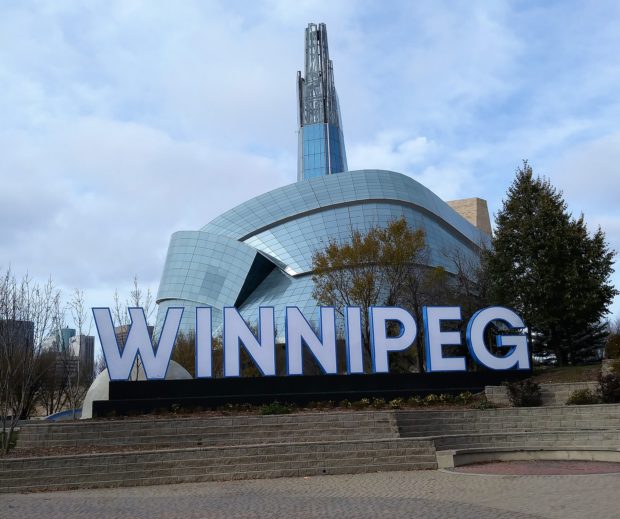CALL FOR PAPERS
American Society for Ethnohistory
2017 Conference
October 12-14, 2017
Fairmont Hotel
ᐄᐧᓂᐯᐠ Wînipêk Winnipeg, Manitoba
“Borders: Visible and Invisible”
Visit the Conference Website:
www.ethnohistory2017.com
To Register for the Conference:
https://ethnohistory.ecwid.com/?lang=en
Located at the intersection of the Red and Assiniboine Rivers, the city of Winnipeg, which gets its name from the Cree word for “muddy waters” rests near the geographic and latitudinal heart of North America on Canadian Treaty 1 lands. The long history of this place going back thousands of years is humbling given the communities of Assiniboine, Cree, Dene, Dakota, Inuit, Métis and Ojibwe who made the lakes, rivers, and prairies of Manitoba their home negotiated the first treaties following the confederation of Canada, sought Truth and Reconciliation and decided to be Idle no . The rivers that drew Native people here also brought French traders to the confluence of the Assiniboine and Red Rivers in 1738, while the British sailed their trading ships into the enormous bay they named after Henry Hudson and competed with the French for Indigenous allies and environmental resources. The Selkirk settlers established the Red River colony in 1811, and the intervention of Americans favoring annexation of the region contributed to the political chaos that spawned the Métis Red River resistance whose leader, Louis Riel, resisted the confederate government of Canada and US annexation pressures to found the province of Manitoba. In recent years Winnipeg has grown to become the seventh largest city in Canada, known for its flourishing arts scene, green spaces, the Manitoba and Hudson’s Bay Company Archives, the Manitoba Museum, the Winnipeg Art Gallery and the new Canadian Museum of Human . Winnipeg continues to remain an indigenous space with one of the highest percentages of First Nation, Innuit and, Métis peoples calling it home of any major North American City; it continues to be an intersection between Canada’s indigenous and settler cultures. 2017 will mark the 150th anniversary of Canadian Confederation. Please join us to celebrate this historical moment at a vibrant historical place.
Borderlands studies have reoriented understandings of settler and interactions while reconsidering and complicating important links between the environment, politics, society, and culture in in-between spaces. Ethnohistorians continue to seek new methods, including incorporating oral history, literature, language revitalization, digital humanities, and community initiated projects into their scholarship in order to give voice to the stories of indigenous communities. This scholarship works to bridge the borders that continue to divide academia from communities. The American Society for Ethnohistory’s 2017 program committee encourages submission of proposals that will illuminate the visible and invisible borders created across landscapes, within societies, between cultures or political states, divide communities, and highlight the events and ideas that encourage breaking down walls and barriers as well as the bridges across borders and boundaries that seek reconciliation.
Program Committee:
Cary Miller
University of Manitoba
carym@uwm.edu
Rebecca Kugel
University of California-Riverside
rebecca.kugel@ucr.edu
Lucy Murphy
Ohio State University
Murphy.500@osu.edu
Jennifer Brown
University of Winnipeg (emeritus)
jennifer@professorsbrown.com
Regna Darnell
University of Western Ontario
rdarnell@uwo.ca
Rose Stremlau
Davidson College
rostremlau@davidson.edu
Jennifer Hughes
University of California-Riverside
jennifer.hughes@ucr.edu
Patricia Harms
Brandon University
harmsp@brandonu.ca
Nicole St. Onge
University of Ottawa
nstonge@uOttawa.ca
